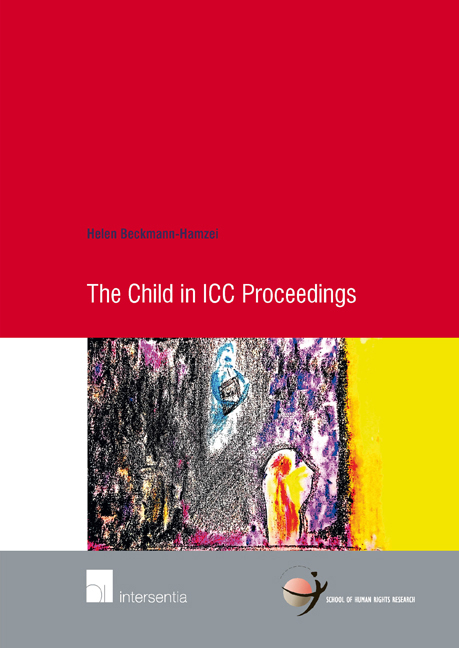Book contents
- Frontmatter
- Acknowledgments
- Contents
- List of Abbreviations
- Introduction
- Part I The Child in International Criminal Proceedings
- Part II The Child in International Reparation Practice
- Part III Concluding and Comparative Evaluation
- Summary
- Samenvatting
- Selected Bibliography
- Overview of Legislation
- Overview of Cases
- Curriculum Vitae
- Titles Published in the School of Human Rights Research Series
- Frontmatter
- Acknowledgments
- Contents
- List of Abbreviations
- Introduction
- Part I The Child in International Criminal Proceedings
- Part II The Child in International Reparation Practice
- Part III Concluding and Comparative Evaluation
- Summary
- Samenvatting
- Selected Bibliography
- Overview of Legislation
- Overview of Cases
- Curriculum Vitae
- Titles Published in the School of Human Rights Research Series
Summary
A child who has been victimised during an armed conflict or large-scale violence does not only face the challenge to heal from the immediate suffering caused to his or her physical or psychological well-being. Instead, the child also has to cope with the often traumatising experiences of conflict situations in the long term. Separation from family or even the loss of family members are just two instances which are likely to have consequences that a child will be confronted with during and in the aftermath of the armed conflict or large-scale violence.
International law, in particular the protection of children during and in the aftermath of armed conflict, is reflected in numerous child-specific international legal documents. In addition to children's substantive protection, the status of children seems to have gained another component: the child as procedural player. This is because children have increasingly participated not only in criminal proceedings before the Special Court for Sierra Leone, but also in proceedings before the International Criminal Court. Whether the child is also in need of particular procedural protection as a result of being a child, has not yet been comprehensively addressed under international law and is therefore the subject of this research.
Taking into account the serious lack of international regulation concerning the procedural status of the child in international criminal proceedings, the research aim is twofold: Firstly, it analyses whether and to what extent the proceedings are sufficiently child-sensitive. Secondly, a lack of child sensitivity might lead to child participation which cannot be considered to be in the best interests of the child. Consequently, where necessary, this research aims to establish whether additional child-specific regulation and awareness is necessary in order to adequately accommodate the particular needs of the child. It thereby also aims to assess whether it is at all possible that ICC proceedings are sufficiently child-sensitive. If not, it might be necessary to reconsider the possibility that children participate. To summarise the above, the concrete objective of this research reads as follows:
The research aims to provide informed insights into whether and to what extent participation in ICC proceedings is in the best interests of the child.
In light of this research aim, the problem statement reads as follows:
To what extent is the ICC procedural framework child-sensitive taking account of the evolving capacities of the child?
- Type
- Chapter
- Information
- The Child in ICC Proceedings , pp. 223 - 228Publisher: IntersentiaPrint publication year: 2015

